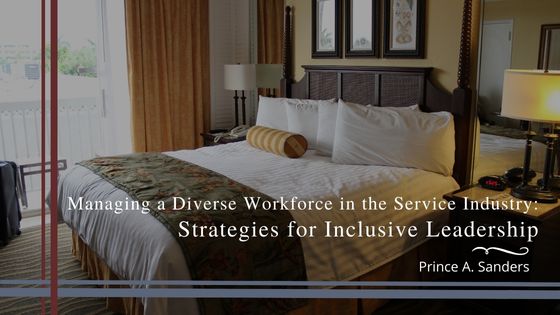The service industry, a broad sector ranging from hospitality and tourism to health and retail, is one of the most diverse sectors globally. In such a landscape, leading a multicultural, multi-generational, and multi-gendered workforce is both an opportunity and a challenge. Properly harnessed, diversity can foster innovation, enhance customer service, and drive business growth. However, achieving these benefits demands more than acknowledging diversity—it requires a dedicated approach to inclusive leadership.
The rise of globalization, ease of travel, and international education have led to workplaces becoming more diverse than ever before. This diversity becomes especially crucial in the service industry, where personnel often directly interact with a varied clientele. It ensures that services are attuned to broader cultural and personal needs. Nevertheless, with this diversity comes the necessity for leaders to be equipped with the skills and strategies to manage it effectively.
1. Promote Cultural Intelligence
Cultural Intelligence goes beyond being aware of cultural differences. It entails the capability to function effectively across national, ethnic, and organizational cultures. Leaders in the service industry must invest in training programs that enhance CQ, not just at the managerial level but across the workforce. This involves understanding cultural norms, values, and behavioral patterns. For instance, how feedback is provided or received can differ vastly between cultures. While direct criticism might be appreciated in one culture, it could be seen as rude in another. Leaders can navigate these nuances by fostering CQ, ensuring the workforce feels valued and understood. Furthermore, customers who sense this depth of understanding are more likely to feel respected and catered to, enhancing their overall service experience.
2. Adopt Flexible Leadership Styles
Inclusive leadership in the service industry demands flexibility. A one-size-fits-all approach can alienate segments of the workforce. Leaders must be attuned to their team members’ motivations, communication preferences, and work styles. For instance, while baby boomers might value job security and regular feedback, millennials and Gen Z might prioritize work-life balance and meaningful work. A leader who rigidly sticks to traditional management styles might find it challenging to motivate younger generations. These preferences may also be influenced by gender, race, and cultural background. By adopting a flexible leadership approach, managers can ensure that they provide the proper support, mentorship, and incentives tailored to individual needs, ultimately boosting morale and productivity.
3. Create Platforms for Dialogue and Feedback
One of the pillars of inclusive leadership is open communication. Leaders must foster an environment where employees can voice their opinions, share experiences, and provide feedback. Regular town hall meetings, anonymous suggestion boxes, and inclusive team-building activities can be instrumental in achieving this. By creating these platforms, leaders can get insights into potential issues before they escalate. For instance, if a specific demographic feels underrepresented or misunderstood, open dialogues can shed light on these feelings, allowing for timely interventions. Such platforms allow for the sharing of diverse ideas, leading to innovative solutions that a homogenous group might overlook.
The diverse nature of the service industry offers a goldmine of business opportunities. However, leveraging this diversity requires a nuanced, inclusive approach to leadership. By promoting cultural intelligence, adopting flexible leadership styles, and creating platforms for open dialogue, leaders can ensure that they are not only managing diversity but are also harnessing its immense potential for growth, innovation, and unparalleled service delivery.
